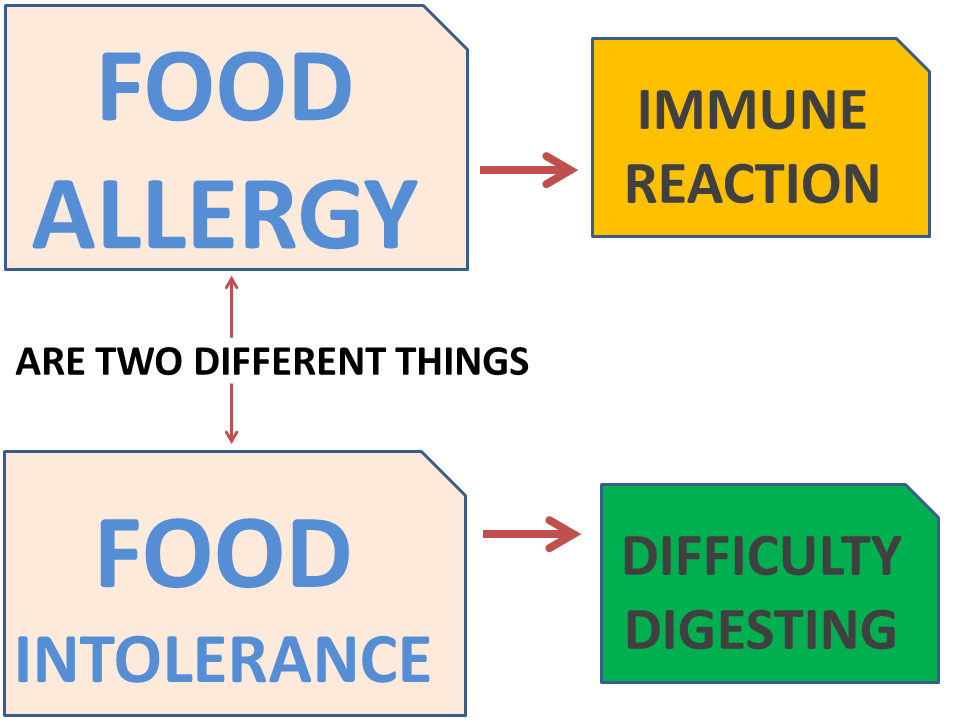The adverse reaction to food manifests itself as an intolerance or an allergy. They are two different diseases for symptoms, for the tests to be performed and the prognosis. The role of diet remains essential in the recovery of food tolerance.
Food intolerance or allergy. Difference between intolerance and allergy: causes and symptoms These are unwanted reactions that some people experience when in contact with certain foods. In intolerance, an inflammatory defense reaction of the organism prevails, not mediated by the immune system, due to a lack of the enzyme necessary for the digestion of the food. Symptoms are influenced by the frequency and dose of the food eaten.
It is a reaction mediated by IgE antibodies
The inflammation is secondary to the increased production of inflammatory substances (cytokines, Baff, Paf) towards gluten, yeast, nickel, lactose. It is a common observation that people with irritable bowel syndrome (IBS) often experience intolerances. In food allergies the immune system intervenes with an exaggerated response. Symptoms are rapid even after taking little food. It is a reaction mediated by IgE antibodies which, in contact with food, release that histamine responsible for many annoyances. The clinical manifestations are: swelling, itching, redness up to severe respiratory forms with dyspnea. Diagnosis isn’t always easy.
The RAST test, blood test, and the Prist, skin test, are tests for the search for IgE antibodies. To simplify: the digestive system is involved in food intolerance and is dose dependent. In allergies the immune system is involved with an alarm reaction even after having eaten little food to which one is sensitive.Intolerance in childrenFood intolerance in children Babies can also suffer from adverse reactions to foods, especially during weaning. The substances that most often cause them are cow’s milk, eggs, soy, gluten, tomatoes, citrus fruits, chocolate, fish, strawberries.
It is important to contact the pediatrician allergist in case of suspicion. Symptoms in intolerance If a person recurs on a food that they cannot digest they will develop a variety of intestinal and extra-intestinal symptoms. Let’s see them. Gastro-intestinal symptoms: bloating, excess gas, stomach pain, diarrhea Extra-intestinal symptoms: migraine, headache, rhinitis, conjunctivitis, malaise, aggravation of rheumatic diseases What causes intolerances? Food intolerances appear when too much food is overused with difficulty in being absorbed from the intestine. This is associated with a deficit of digestive enzymes necessary for absorption.

The prolonged stay of lactose
The intestinal dysbiosis itself and its microbiota promote intestinal inflammation. To diagnose intolerances, let’s see what else causes them in addition to food: Food groups milk fructose gluten salicylates Toxicosis food dyes and preservatives sulphites Lactose intolerance Lactose is a disaccharide, present in milk and cheese, composed of two sugars, glucose and galactose.
In lactose intolerance there is not enough lactase, the enzyme that transforms lactose into a more digestible sugar for the intestine. The prolonged stay of lactose in the digestive tract can cause cramps, stomach pain, bloating, diarrhea and gas. Breath tests are used to diagnose lactose intolerance. It is a test in which the concentration of lactose in the breath is assessed when having drunk milk. Fructose intolerance It is a genetic disease due to the deficiency of the enzyme Aldolase B necessary to absorb the fructose present in fruit, vegetables, honey, candies. In these individuals, the fructose in food ferments in the intestines causing gas, fullness, bloating, cramps and diarrhea. In more advanced forms, liver damage appears. Diagnosis is made with DNA tests.

